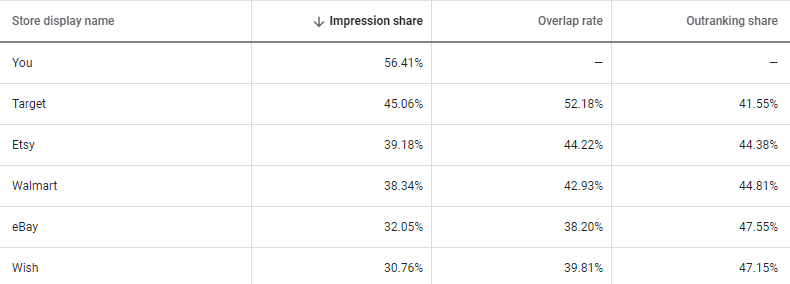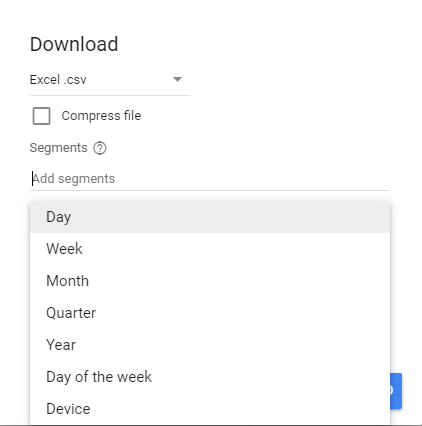Google Ads can feel like a difficult platform for advertisers to understand at times.
At its core, it seems simple: bid on keywords in real-time and get users to click on your ads.
The truth is, it’s a very robust platform that is starting to splinter into two use cases:
- Those for more enterprise-level brands that understand how to manage it.
- Google’s “done for you” versions like Smart Campaigns for smaller businesses that don’t want to deal with it.
If you aren’t experienced with Google Ads, it can feel daunting and exhausting.
It can also be difficult for people who are just getting into Google because of all the information out there and the number of features it has.
There are many different reasons brands give up or just wind up not knowing what to do.
Some brush it off as not working for their business, while others are sure it can work, but just feel overwhelmed by it.
Whenever I look at an account that is struggling, or a brand that feels frustrated with it, the issues usually fall into one of a few buckets.
Here are the most common reasons why an account isn’t doing well in Google Ads.
1. Not Understanding Match Types
It would seem logical that the keywords you input are the phrases you want to show for.
Google doesn’t treat them that way, however.
They have four different ways you can specify your keywords be matched:
- Broad Match
- Broad Match Modified
- Exact Match
- Phrase Match
One extreme or the other can be bad:
- Lots of broad match without negative keywords to make sure junk isn’t being bought.
- Exact match keywords that are highly expensive and low volume, sometimes leading to a landing page that doesn’t convert well. (See the section below on landing pages for more information on that.)
Match types have their good and bad points, and this got even more complicated as Google messed with exact match.
With the broad versions, you’ll wind up paying for some wasted clicks and add negative keywords pretty frequently.
With phrase and exact, you will pay a higher CPC, so you have to make sure the math works for your profit margins.
Typically, the healthiest accounts are the ones that utilize a mix that works for them monetarily.
Many brands will bid on exact match out of principle because they are the most relevant terms.
While that may be true, if it’s costing you four times as much as broad, you need to make sure your conversion rate is converting at a multiple rate to your broad match traffic.
Studying your search query report will give you insights over time about how much your match types cost and where your queries are best-matched.
2. Trying to Interrupt the Search
Another big issue is when marketers just jump into Google Ads feet first and start buying up keywords, even if they’re loosely related.
When that doesn’t produce results, they don’t understand why.
For example, “The user is searching for running shoes, so obviously I should advertise my running shorts to them.”
From a marketing perspective, you’re not wrong – but this doesn’t take into account the psychology of search.
Searchers, especially those with more specific searches, tend to be very single-minded.
They have told the search engine what they want and aren’t going to be easily distracted by what you are trying to sell if it’s not that thing they searched for.
Before you ever go into Google Ads, you need to do your research and put thought into your campaigns.
Spend time being realistic on what they are searching for and how you can solve their search with an ad and a landing page.
Before executing anything in Google Ads, put a game plan together of:
- The categories/products/services you want to focus on.
- The keywords you want to buy.
- How you will convert or provide value to these searchers when they are searching.
Always think about how to solve the searcher’s intent without trying to be five steps ahead of them.
A search is a moment in time and you need to serve that user’s moment.
Sure, they may need upsells or there are other topics to consider, but trying to accomplish that in a text ad isn’t going to happen.
Get them to your brand first, and then continue to deliver value.
3. ROI Doesn’t Align with Profits
Sometimes, there is a disconnect between your ROI goals and what is actually attainable.
Google Ads is a great tool because you can track all of your sales/leads, but this can also create a lot more measurability and the lack of measurable results.
Advertisers can get the wrong idea of their return on Google Ads.
For example, let’s say that you sell baseball gear online.
One of the best ways to acquire customers is by search marketing – buying keywords such as “baseball shirts” and other related keywords.
However, you need a 4 to 1 return on your advertising spend, and Google Ads produces a 2 to 1 return.
Does this mean you should abandon Google Ads?
Answer: Maybe.
The key is in understanding what to look at beyond that to make a determination.
For example:
- Is the return low because your conversion rate could be higher?
- Is the immediate return lower, but you have a higher lifetime customer value that you should be accounting for?
It could be that the total value is actually more than the one initial purchase triggered by a Google Ads campaign.
In order to calculate your ROI effectively, you need to look at the full customer journey.
That goes for both what they do as your lifetime customer and also where you can make improvements in the PPC process to increase conversion and decrease costs.
4. Landing Pages Do Not Convert
If you are sending someone to your site from Google Ads, your goal should always be to convert them into a customer.
However, sometimes marketers can get in their own way here by giving visitors reasons to bounce.
Too much information on the page, hard to find call to actions, or not highlighting the information the searcher wants can all contribute to users leaving without converting.
The first thing is to focus on the keywords you are buying on the searcher’s intent.
Remember what we noted before: searchers are single-minded. Address exactly what they searched for.
After that, make sure that the landing pages are clear in their intent, and your product offering is something the searcher wants.
Otherwise, you are wasting your money buying keywords that are never going to convert into customers.
A good exercise is to critique your landing page in comparison to your competitors – and be honest with yourself:
- Does it fully explain what I am offering in the first three seconds?
- Does what I am offering truly match with what they are searching for?
- Do I give the visitor the next steps to converting into a customer quickly?
If you follow these fundamentals, you should be on your way to converting Google Ads visitors to customers.
5. Price or Other Competitive Factors
Over time, your competitors can gain traction on you through better product offerings, price decreases, value propositions, and more.
Just because you are converting less than you used to, it doesn’t mean that Google Ads is the problem.
There could be other factors at work and, sometimes, this goes beyond looking at your landing pages or the traffic you are buying.
Make sure you constantly:
- Keep your finger on the pulse of your competitors on a monthly or even weekly basis.
- Survey/request feedback from your customers to gain insights into your industry.
- Stay ahead of the game with your value proposition.
Google Ads has a helpful feature called Auction Insights that will also give you perspective on who you’re competing with, and hints to what they are doing.
Pulling quarterly analysis of their spend and positions can give you insights into where you might be losing ground.
To view it, click the box next to the Campaign or Ad Group you want to analyze.
The blue banner will appear, with the option for “Auction Insights.”

Clicking on it will give you a list showing you helpful data about your competition:

If you want to see how these values have changed over time, you can choose the date range in the upper right, hit that “Download” button, then “More options” and add segments.
This will let you download additional information to see differences by week, month, quarter, day of week, device, and many other helpful areas.

6. No Optimizations of the Account
This can be a very big problem, and it usually happens for one of a few reasons.
There are thousands of techniques, bidding strategies, or general Google Ads strategies you could be using to save money and make your campaigns more effective.
All of that can lead to overwhelm on knowing what to spend time with, and many instances where advertisers may not even realize some options exist.
Often-neglected areas include things like:
- Bid modifiers by device.
- Bid modifiers by time or day.
- Bid modifiers by geographical performance.
- Regular review of the search query report.
- Addition of negative keywords.
- Testing new bid strategies.
- Ongoing ad copy testing.
7. No Audience Observations & Adjustments
As Google Ads has matured, the platform started blending in audience targeting that relates more to a user’s habits and mindset beyond just what they search.
In the “Audiences” tab, you can add Observation audiences to see the relative value of different user segments.
For example, if you sell an eco-friendly product, you might want to specifically see how green living enthusiasts convert or compare homeowners versus renters.
Google Ads has hundreds of audiences you can add.
If you set them as “Observation,” then your ad will still show to every searcher, but it will let you see the performance specific to those groups.
Here is an example of some different audiences, and how their performance varies greatly in some cases:

There’s a column for Bid Adjustments, so as you find strong and weak audiences, you can adjust bids specifically for those segments.
For example, if you sell carpeting, you may find renters don’t convert, and you add a strong negative bid modifier for that segment.
The Takeaway
While Google Ads can be a complex environment, usually weak performance can be diagnosed and addressed.
Many times paid search can work great for a business, but not without attention to detail.
For more ideas around how to get your account doing better, try doing an audit on your account.
More Resources:
- 8 Ways You’re Doing Google Ads Wrong & How to Make It Right
- Why Is a Previously Rocking PPC Campaign Tanking?
- Ad Reporting Discrepancies: What to Do When Your Data Doesn’t Match
Image Credits
All screenshots taken by author, June 2020





